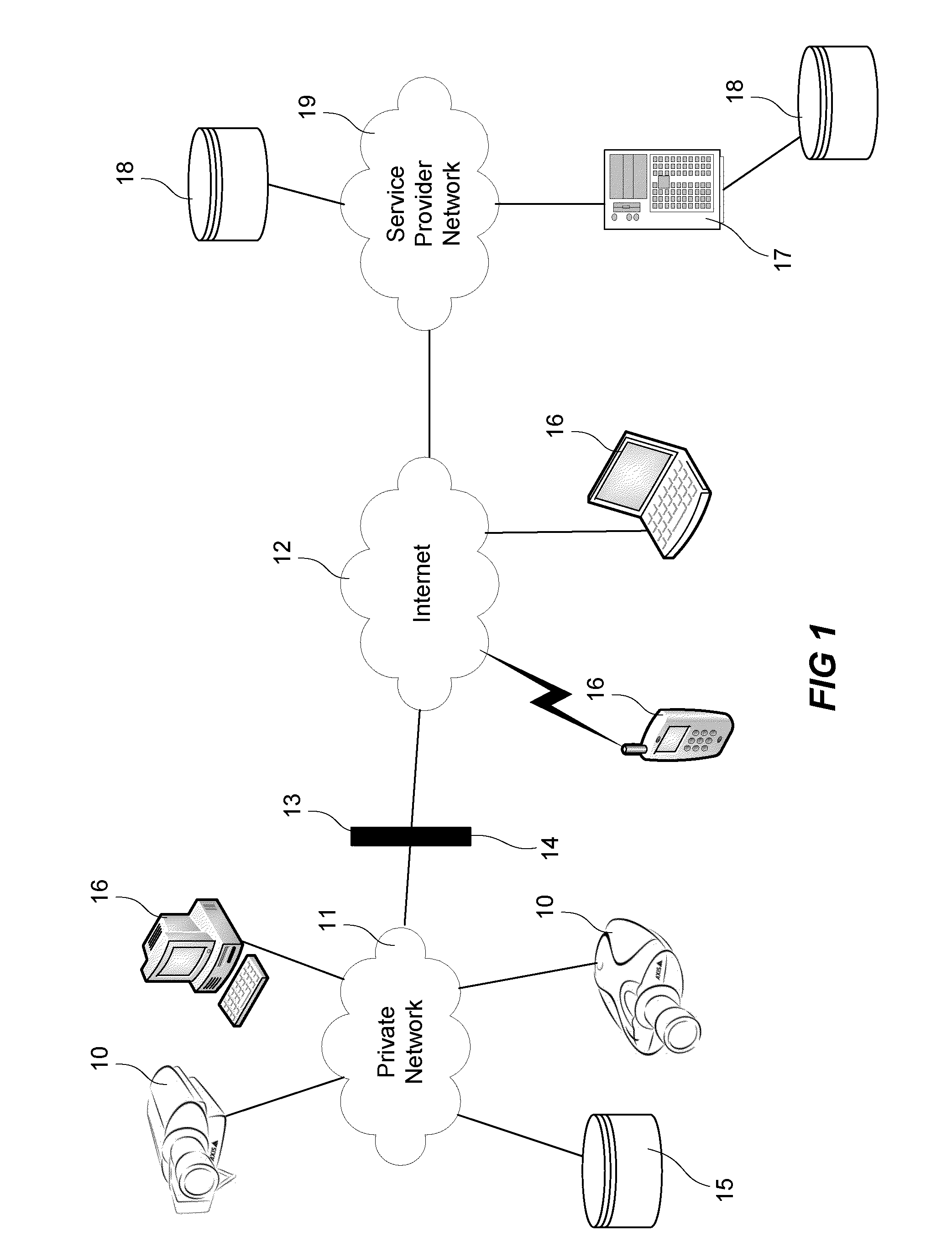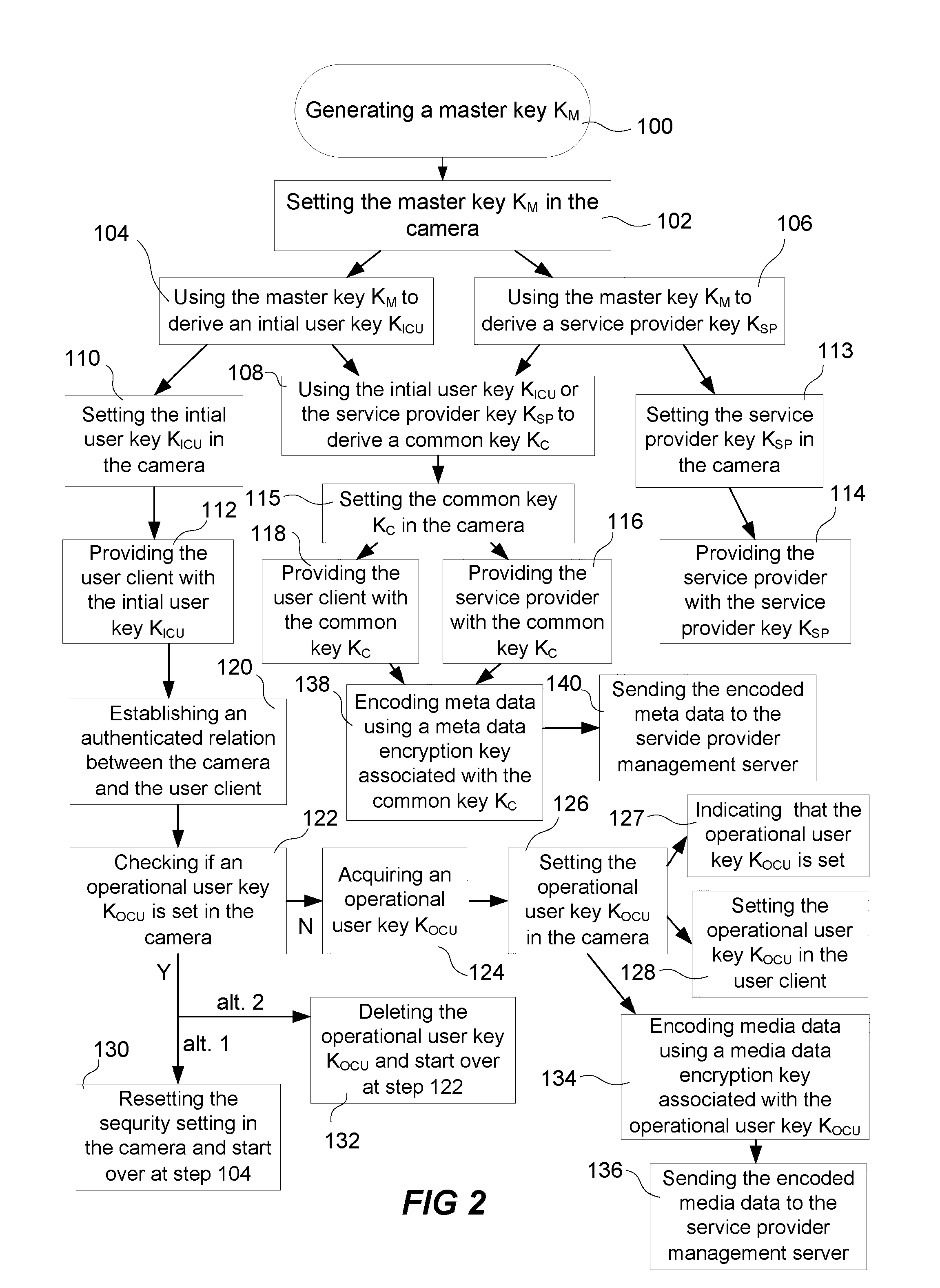Method for restricting access to media data generated by a camera
a technology of media data and access restriction, which is applied in the direction of computer security arrangements, internal/peripheral component protection, television systems, etc., can solve the problem of preventing e.g. the service provider from getting control of the camera
- Summary
- Abstract
- Description
- Claims
- Application Information
AI Technical Summary
Benefits of technology
Problems solved by technology
Method used
Image
Examples
Embodiment Construction
[0034]Video surveillance may be implemented as a subscriber based system wherein a user installs network video cameras at a location to be monitored, e.g. the users home, but where the cameras are controlled and managed by a service provider or at least via a service provider, as illustrated in FIG. 1.
[0035]The surveillance system according to the embodiment shown in FIG. 1 comprises a network video camera 10 monitoring a property. The network video camera 10 is connected to a private network 11, which is connected to a public network such as the Internet 12, a NAT 13 and / or a firewall 14 protecting the private network 11 from external attacks, a user client 16 either directly connected to the private network 11 or connected to the Internet 12, a service provider offering the user property surveillance services through a public service provider management server 17 connected to a service provider network 19, and a service provider storage unit 18 either directly connected to the ser...
PUM
 Login to View More
Login to View More Abstract
Description
Claims
Application Information
 Login to View More
Login to View More - R&D
- Intellectual Property
- Life Sciences
- Materials
- Tech Scout
- Unparalleled Data Quality
- Higher Quality Content
- 60% Fewer Hallucinations
Browse by: Latest US Patents, China's latest patents, Technical Efficacy Thesaurus, Application Domain, Technology Topic, Popular Technical Reports.
© 2025 PatSnap. All rights reserved.Legal|Privacy policy|Modern Slavery Act Transparency Statement|Sitemap|About US| Contact US: help@patsnap.com



